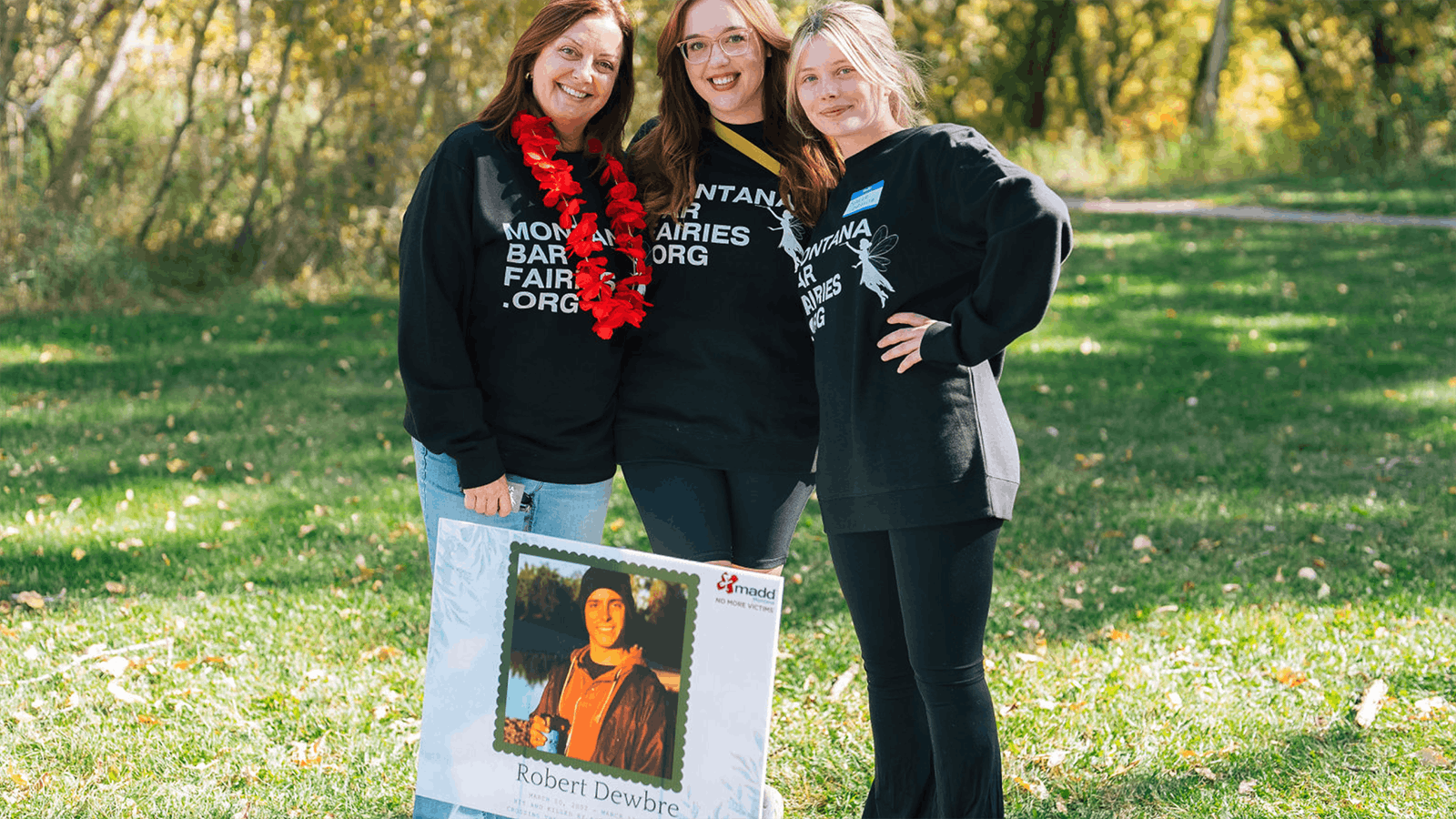In her 2016 memoir “North of Crazy,” Neltje Doubleday Kings chronicles her decision to leave a life of privileged aristocracy for a more authentic life in Wyoming.
Along the way, the publishing heiress rebuilt herself as a painter, rancher, businesswoman, and mother while creating a platform for other artists to find their voices.
Although Neltje — she changed her name legally to just her first name — died in April 2021, she gifted her ranch on Lower Piney Creek near Banner, Wyoming, to the University of Wyoming to be a center for collaboration, an artist retreat, and a performance space.
“About 10 years before she died in the spring of 2021, she started working with then-president of the university, Tom Buchanan,” said Beth Venn, who has been the executive director of the Neltje Center for Creativity and the Arts since 2023. “He and Neltje got to know each other well, and they started to develop a plan for Neltje to give all of this to the University as a gift upon her death to be run as a center for arts and culture and the humanities.”
The gift, which the University notes is the largest in its history, consists of her ranch, studio, art collection, and financial holdings.
The structure itself tells a story of transformation.
“She designed the house so it's kind of got no real right angle,” said Venn. “Every part of it is so visually engaging, so people who come here to work also just find it so inspiring. They are able to think differently, they're able to kind of open up their minds and think bigger.”
Neltje Doubleday
The only daughter of Nelson Doubleday and Ellen McCarter, Neltje was born in New York City in 1934.
Her grandfather Frank Doubleday was the founder of the United States Doubleday publishing company. Named after her paternal grandmother, Neltje attended private schools and was raised to adhere to the strict rules of high society.
Her gilded life of East Coast aristocracy also was overshadowed by coldness, manipulation, and cruelty, according to Neltje herself, as she wrote in her 2016 autobiography.
“I was born into privilege, but not into love,” she wrote.
In May 1953 at the age of 18, Neltje married then-28-year-old John Sargent, an executive at the Doubleday Co. The couple had two children, daughter Ellen and son John Jr.
Despite the wealth and privilege her family afforded, Neltje was desperately unhappy, trapped in a marriage marked by domestic abuse, guilt, and fear.
In an act of defiance, Neltje divorced her husband, taking her young children to the wilderness of Wyoming in 1966.
“I walked away with nothing but my children, my courage, and the will to breathe my own air,” Neltje wrote.
Reinventing Her Life
At the age of 30, just before leaving her life of wealth and privilege behind, Neltje began learning how to draw and discovered a longing to create art.
In 1966, she bought a 440-acre ranch on Lower Piney Creek near Banner and Ucross in northeast Wyoming. There she learned to paint and began working in a variety of mediums.
Neltje wrote that it was in the unlimited vistas of Wyoming where she found the peace that she had longed for.
“Why here in Sheridan County, Wyoming? Why in these rolling hills and valleys east of the Big Horn Mountains? The space,” she wrote, which is posted to the website for her foundation, jentelarts.org.
“The unlimited vistas of a sea like landscape undulating west to the massive forms of the mountains bring a sense of stability and thereness to those who live here and those fortunate enough to visit … just plain room to be, to question, to think, to create, and to love.”
Neltje The Artist
In 1985, Neltje’s passion for art evolved into her profession.
As an abstract expressionist painter, Neltje’s work has been exhibited across the country, from the Nicolaysen Art Museum in Casper, the University of Wyoming Art Museum, and the Yellowstone Art Center in Billings, Montana, to the Smithsonian Institution, IBM Corp., and the Wyoming State Museum.
“Neltje often painted on a monumental scale, creating canvases filled with gesture, energy and color,” said Venn. “She was a master at balancing color, form, and composition.”
Venn pointed out that although Neltje studied briefly at the New York Studio School, she was largely self-taught, taking much of her inspiration from the abstract expressionist painters who preceded her.
“In addition to painting, she explored other media — drawing, printmaking, collage — with the same singular focus,” said Venn. “She left a lasting imprint as both artist and advocate for the arts.”
Inspiring Others
Neltje had many passions, one of which was inspiring the next generation of aspiring artists.
“She was really all about education, and especially education in the visual arts and writing,” said Venn, adding that Neltje loved working with young people, and would invite area teachers to bring their classrooms to her house.
“She would talk to the kids about collecting, not on the grand scale that she did, but she would be like, if you see a flower that you love, or if you see a rock that you like, or a feather, start collecting,” said Venn. “And you'll understand what it means to start finding things that touch you and that mean something to you.”
Venn said that Neltje often collected the work of young artists because she knew how important early support is in giving artists the confidence and motivation to continue when it can often be a difficult road.
“Several artists whom Neltje supported have told me how critical her interest in their work was when they were just starting out,” said Venn.
Venn pointed out that Neltje founded the Jentel Artist Residency because she understood how important it is for artists to have time and space and a conducive environment in which to work uninterrupted.
“Through Jentel, she was determined to give visual artists and writers from across the country the same experience she had of experiencing the power of Wyoming's natural environment and its great potential for artistic inspiration,” said Venn.
The Neltje Center
The Neltje Center now provides a sanctuary for UW students, faculty and other creators, allowing writers, painters, and other artists to find inspiration.
On a mid-September day, Cowboy State Daily was given a tour of the sprawling residence, sections of which are seemingly architecturally incompatible but have come together by the force of Neltje’s personality.
“She designed the house, now the Neltje Center, as a series of rooms and hallways that snake through her property at the foothills of the Bighorn Mountains,” said Venn. “Her love of nature ensured that from every room in the house one could look out oversized windows onto vast views toward the Bighorns, or more intimate views into gardens and flagstone patios.”
Venn added that Neltje carefully tended her gardens, treating them much as she would her canvases for painting, infusing them with color and vivid contrasts.
“Neltje didn't care much for accepted design conventions and so much of the house doesn't contain right angles,” said Venn. “There are archways and round rooms, floor-to-ceiling windows, a large array of sliding glass doors.”
Because of the unique environment, Venn said that artists are able to experiment, push boundaries, and create works that often challenge societal norms.
“In all fields, it could be philosophy, it could be history, anthropology, (and) of course visual arts, music, theater, dance,” said Venn. “As part of their semester-long course, professors will bring their students up here for three to five days to do intensive studies.”
Additionally, the space benefits other university business, as well.
“We've had grant-making workshops here that two professors do,” said Venn. “There's no distractions and, every time they do it, it brings in, like, over $1 million in grants to the university.”
Neltje’s Spirit Lives On
Neltje was much more than a painter. She was also a rancher and entrepreneur.
In 1967, to save it from demolition, the heiress bought the Sheridan Inn, a National Historic Landmark that had deteriorated to the point that it had been condemned.
For 18 years, Neltje owned and operated the Inn, ensuring that the historic property would continue to stand for future generations.
Venn pointed out that the collection of art at the Neltje Center also keeps Neltje’s presence alive in this part of Wyoming.
“What you see in the house is both her own paintings, works of art that she collected from her contemporaries here in the Mountain West, sculptors, painters, and then works of like cultural artifacts that she collected all over the world,” said Venn.
Although Neltje no longer inhabits the ranch on Lower Piney Creek, the center is unmistakably home to her spirit.
“I built my house with my hands, but I built my life with my choices,” she wrote. “I am north of crazy, and I like it here.”
Wendy Corr can be reached at wendy@cowboystatedaily.com.




















